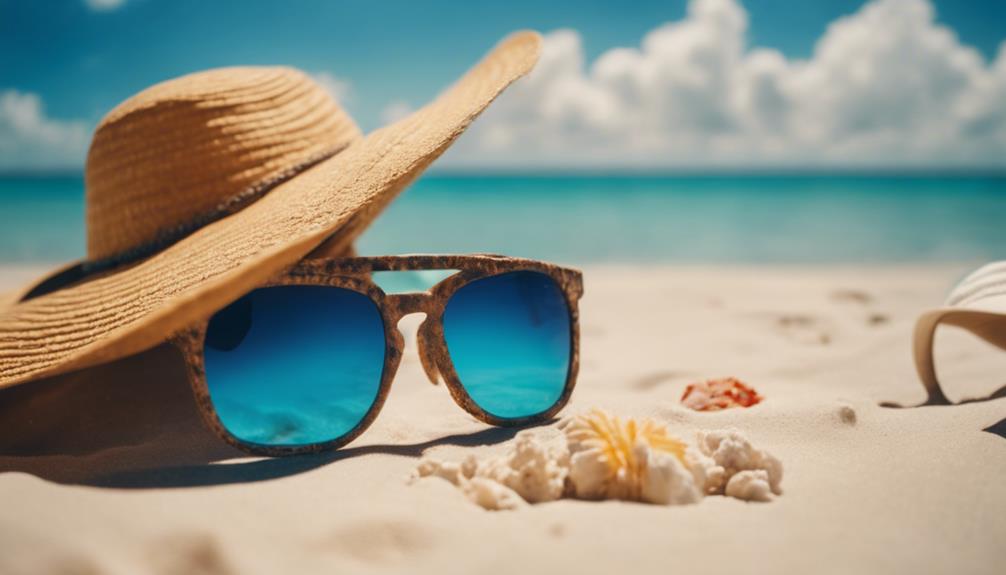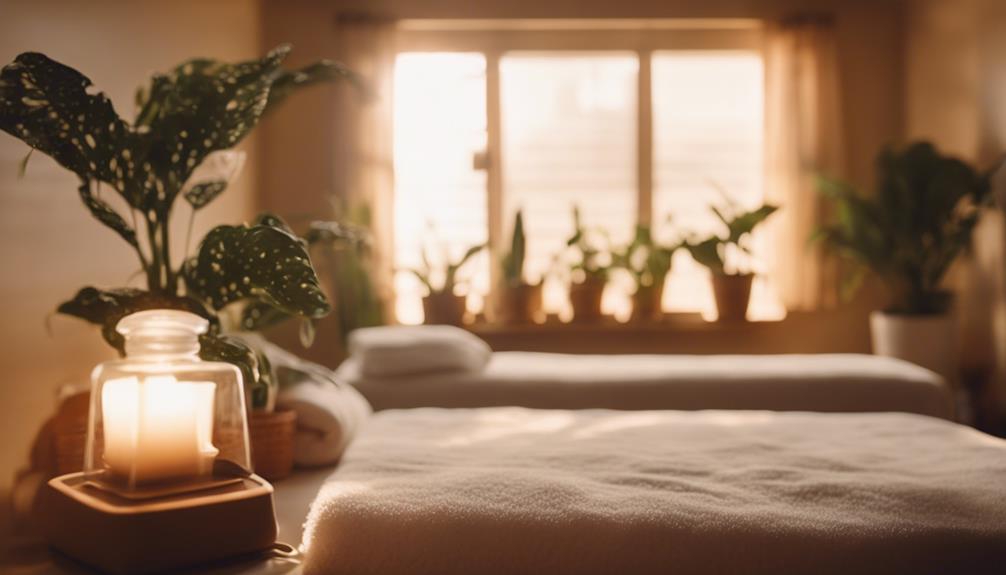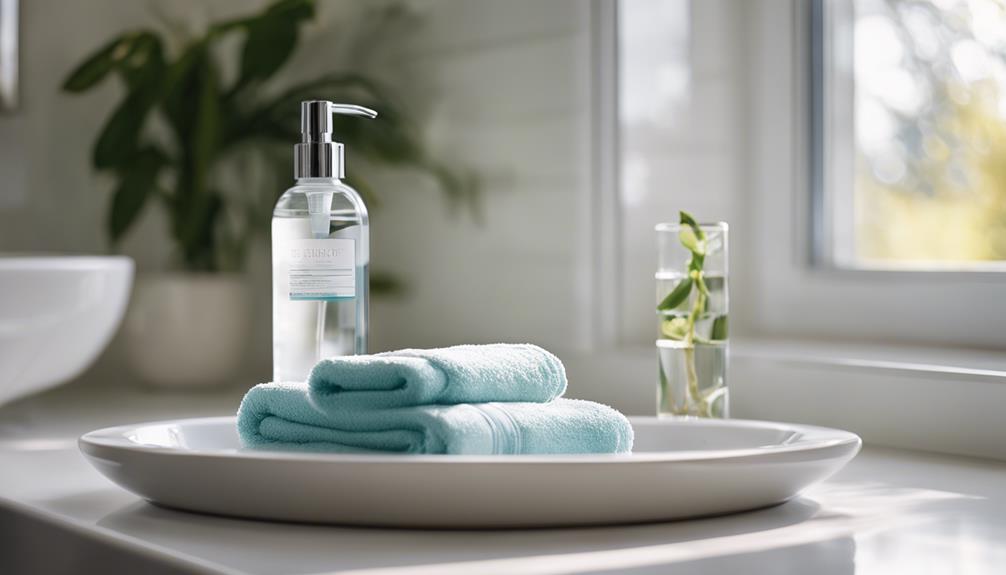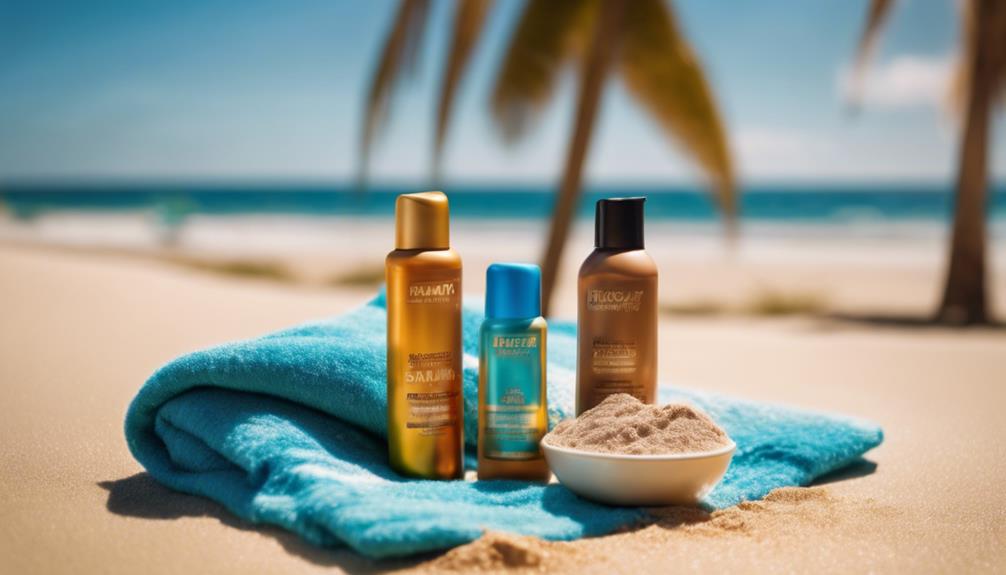Sunburns can sneak up on you like ninjas when you’ve spent too much time in the sun! They occur when UV rays from the sun harm your skin, especially if you have low melanin levels, like those with skin types 1 and 2. While melanin helps to absorb these rays and protect your skin, it’s not a superhero cape. Make sure to use sunscreen with at least SPF 30 as your trustworthy sidekick, and remember to reapply it every two hours. If you’re planning to be out during peak sun hours, don’t forget to wear protective clothing too! By following these steps, you are on your way to sun safety and be sure to stay tuned for more helpful tips!
Key Takeaways
- Sunburn occurs when the skin is overexposed to UV radiation, leading to damage and inflammation.
- Skin type influences sunburn risk, with Types 1 and 2 being more prone due to lower melanin levels.
- Melanin provides some natural protection against UV rays, but sunscreen is essential for all skin types.
- Signs of sunburn include redness, itching, and peeling; severe cases may require medical attention.
Understanding Skin Types
Understanding your skin type is essential for effectively protecting yourself from sunburn and UV damage.
Think of your skin as a special snowflake—no two are exactly alike! The Fitzpatrick skin type scale helps you figure out where you fit in.
If you've got fair skin that burns easily, you're probably in Types 1 or 2. On the other hand, if your skin tans like it's on vacation in the sun, you might be a Type 5 or 6.
Knowing your type helps you choose the right sunscreen and avoid sunburns. Plus, you can impress your friends with your newfound knowledge!
The Role of Melanin
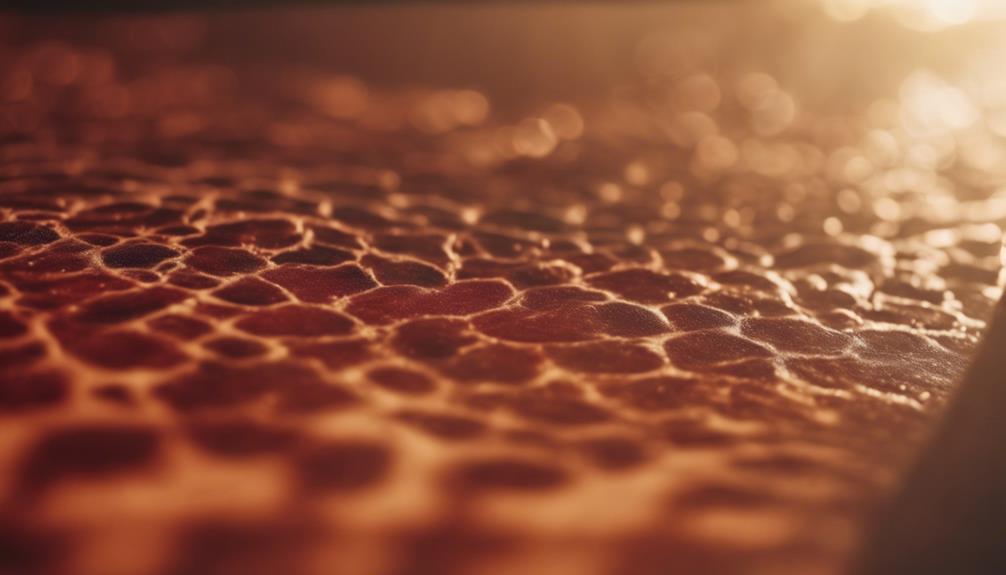
Melanin plays an essential role in protecting your skin from UV radiation by absorbing harmful rays and reducing the risk of sunburn. Think of melanin as your skin's superhero, swooping in to shield you from those pesky UV rays.
The more melanin you have, the darker your skin, which means you're less likely to burn. But don't get too comfy! Even melanin-rich skin can still get sunburned, so it's important to use sunscreen.
Imagine trying to bake a cake without an oven mitt; you wouldn't want to burn your hands! So, while melanin helps, it's not a free pass.
UV Radiation Explained

While melanin helps protect your skin, it's important to recognize that UV radiation can still cause significant damage, making sun safety essential for everyone.
Imagine UV rays as tiny ninjas sneaking into your skin, ready to cause trouble. They can lead to burns, premature aging, and even skin cancer!
That's why it's vital to use sunscreen with at least SPF 30, especially between 10 a.m. and 4 p.m. when those sneaky rays are at their strongest.
Think of sunscreen as your shield against these pesky ninjas. And don't forget to wear hats and sunglasses for extra protection!
So, next time you head outside, ask yourself: Is my skin ready for battle?
Stay safe, and your skin will thank you!
Debunking Tanning Myths
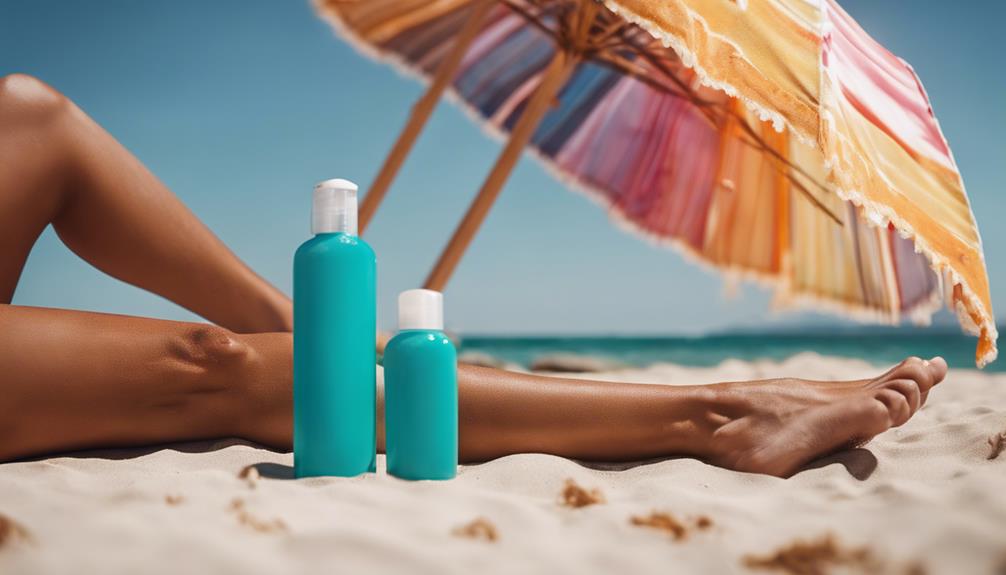
Myths about tanning can lead to dangerous misconceptions that jeopardize your skin's health and safety. For instance, many think a base tan protects you from sunburn, but it actually means your skin's already injured! You might also believe tanning beds are safe, but they're just as risky as direct sun exposure.
| Myth | Reality |
|---|---|
| A base tan prevents burns | It indicates skin damage! |
| Tanning beds are safe | They increase skin cancer risk! |
| You can't tan without burning | UV-free options, like self-tanners, exist! |
Effective Sun Protection Strategies
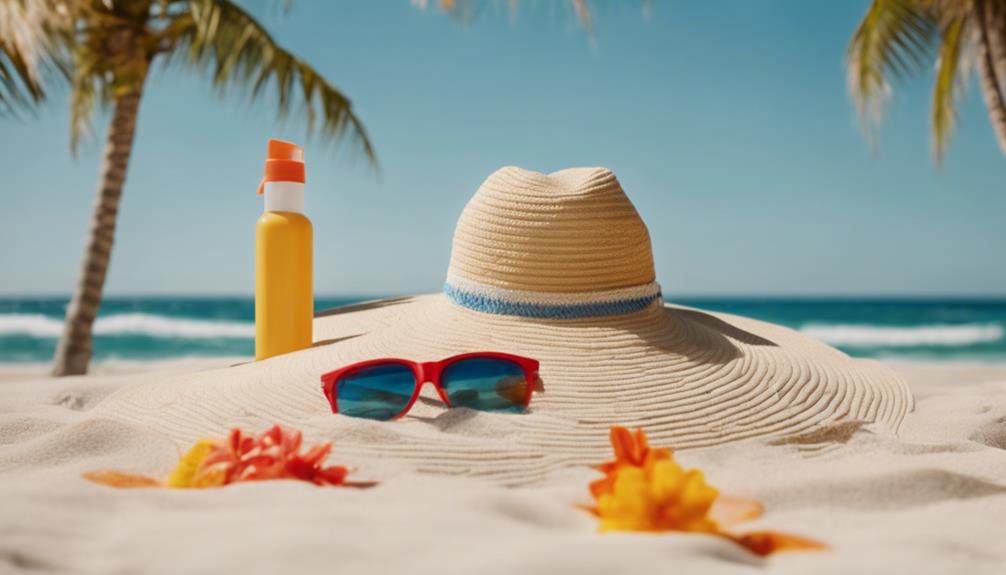
To protect your skin effectively, always apply a broad-spectrum sunscreen with at least SPF 30 before heading outdoors. Think of sunscreen as your personal shield against the sun's rays, ready to battle those sneaky UV rays!
Don't forget to reapply every two hours, especially if you're sweating or swimming—yes, even if you're having a blast at the pool!
Also, try to avoid the sun during peak hours, from 10 a.m. to 4 p.m., when the sun is at its fiercest.
And hey, wearing a wide-brimmed hat and stylish sunglasses can add flair while keeping your skin safe!
Recognizing Skin Damage

Knowing how to recognize skin damage is essential for maintaining healthy skin, especially after sun exposure.
When your skin turns red, itchy, or starts peeling, it's waving a big flag, saying, “Help! I've had too much sun!” Think of it like a sun hangover—your skin's telling you it needs a break.
If you notice blisters or extreme pain, that's your cue to seek help, because it could be more than just a sunburn.
Regularly check your skin for any unusual spots or changes, just like you'd inspect your favorite pair of sneakers for scuffs.
Personalizing Sun Safety
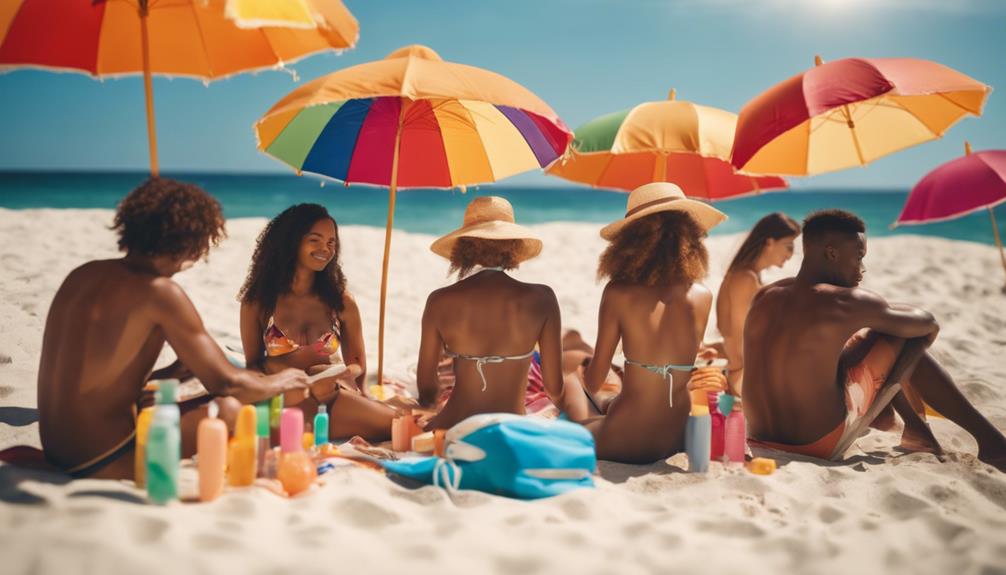
Personalizing sun safety means understanding your unique skin type and how it reacts to UV exposure, allowing you to choose the most effective protection methods.
Think of your skin like a superhero, with some types needing more armor against the sun's rays than others. If you're fair-skinned, you might burn faster than a marshmallow at a campfire, while those with darker skin have a bit more built-in defense.
But don't be fooled—everyone needs sunscreen! You wouldn't go into battle without your shield, right?
So, check your skin type, pick a sunscreen with at least SPF 30, and remember to reapply!
Frequently Asked Questions
Can Certain Medications Increase Sunburn Risk?
Yes, certain medications can increase your sunburn risk. Drugs like antibiotics, diuretics, and some acne treatments can make your skin more sensitive to sunlight, so it's important to check with your doctor for sun safety guidance.
How Does Dehydration Affect Sunburn Severity?
Dehydration can worsen sunburn severity by reducing your skin's ability to heal and increasing sensitivity. Staying hydrated helps maintain skin elasticity and supports recovery, so drink plenty of water to protect your skin from damage.
Do Different Skin Tones Require Different SPF Levels?
Did you know that 80% of sun damage occurs before age 18? Different skin tones do require different SPF levels; lighter skin types need higher SPF to prevent burns, while darker tones still need protection.
Can Diet Impact Skin's Resistance to Sunburn?
Yes, your diet can impact your skin's resistance to sunburn. Consuming antioxidants, omega-3 fatty acids, and vitamins A, C, and E may enhance your skin's defense against UV damage and improve overall health.
What Are the Long-Term Effects of Repeated Sunburns?
Repeated sunburns can lead to long-term effects like premature aging, increased skin cancer risk, and potential DNA damage. You should prioritize sun protection to minimize these risks and maintain healthier skin over time.
What Can I Do to Prevent Sunburn While Also Maintaining a Long-lasting Airbrush Tan?
To prevent sunburn while maintaining the secrets of airbrush tan longevity, it’s important to apply a broad-spectrum sunscreen with at least SPF 30 before going outside. Opt for self-tanning lotions or sprays to enhance your tan without overexposure to harmful UV rays. Additionally, wearing protective clothing and seeking shade can help prolong your airbrush tan.
Conclusion
Now that you're equipped with knowledge about sunburns, remember: “An ounce of prevention is worth a pound of cure.”
By understanding your skin type, the role of melanin, and how UV rays work, you can take charge of your sun safety.
So, before you head out, grab that sunscreen, seek shade during peak hours, and enjoy the sun without the burn!
Your skin deserves the best care, and you'll be thankful later when you're not dealing with a painful sunburn.
